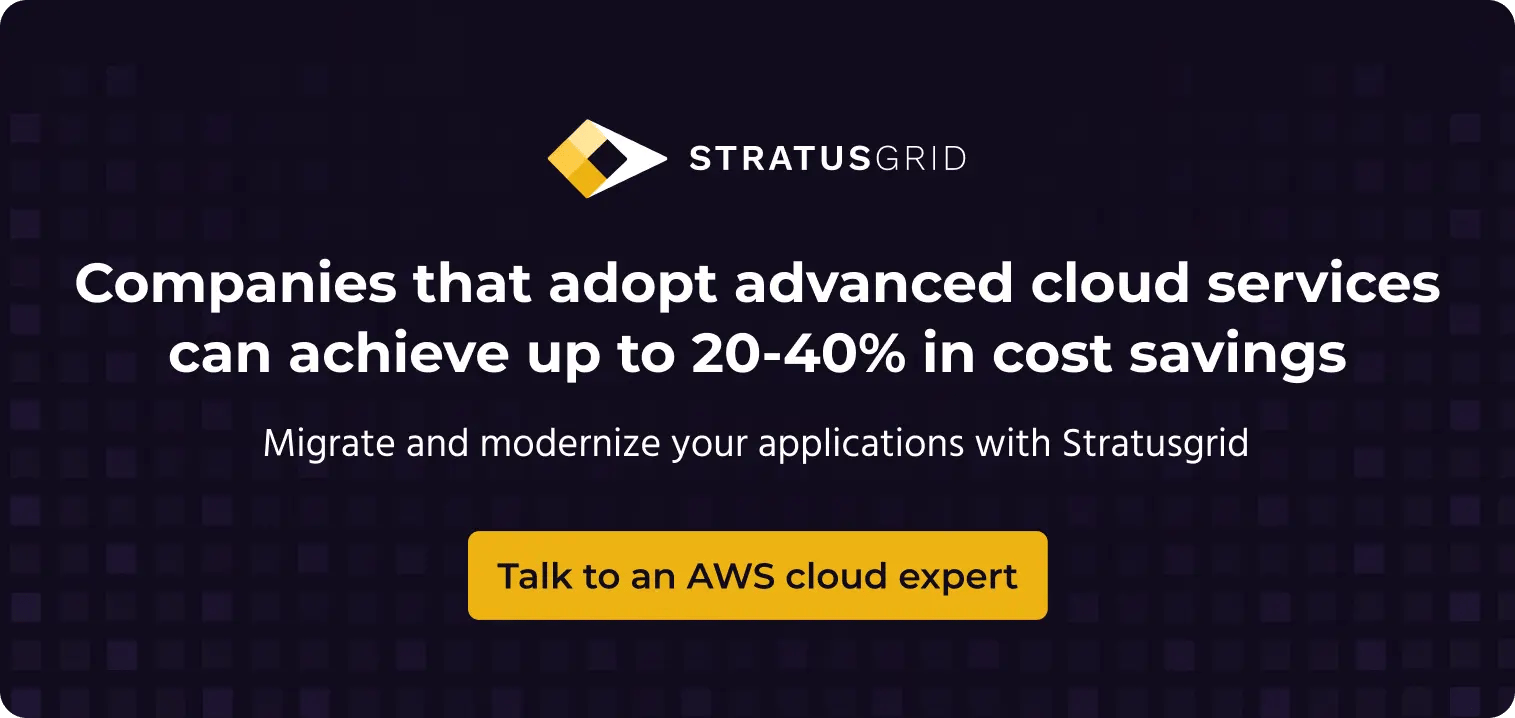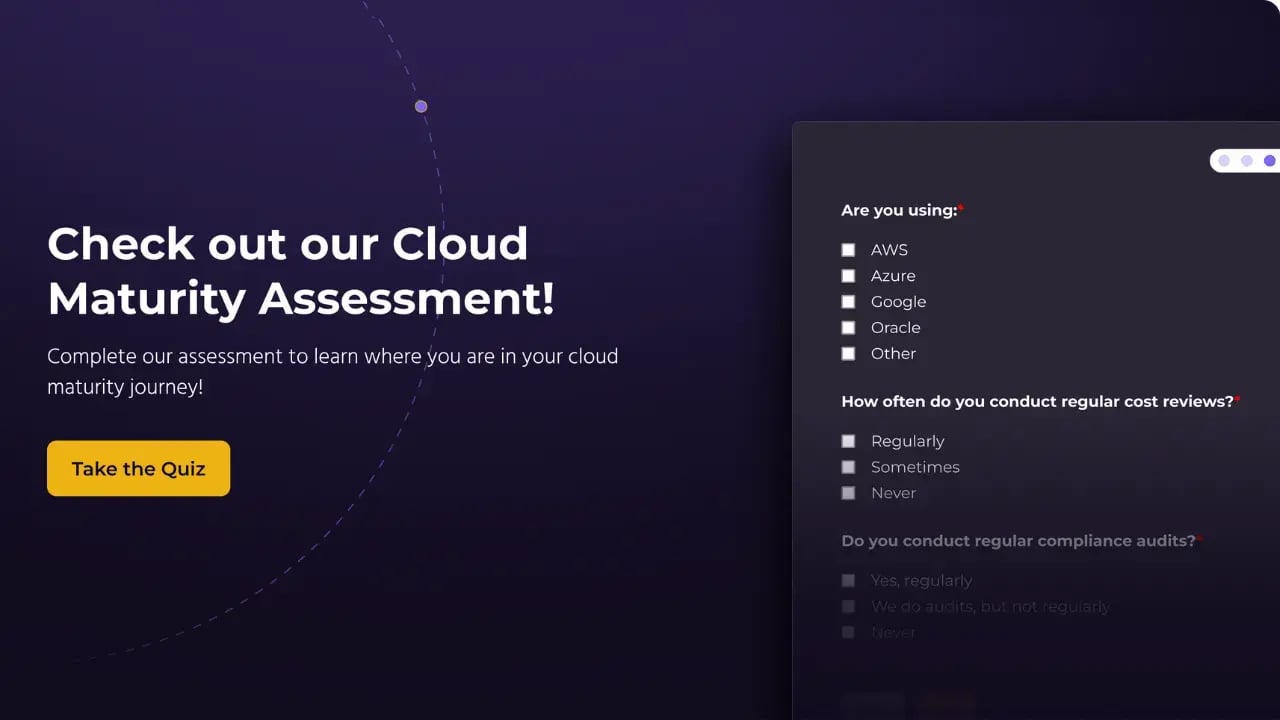Maintaining legacy systems can seem appealing. Why spend time and money upgrading when an existing system already works?
But those old systems cost big bucks. A Deloitte survey found that IT departments spend 55% of their budget on maintenance. They only spend 19% on innovation.
Legacy systems come with multiple direct and indirect costs. That’s why we have specific AWS services to help companies migrate from legacy systems to the cloud. This article covers the exact ways that legacy systems drain your company’s funds – and how upgrading to AWS can help.

The 10 Main Direct Costs of Legacy Systems
Clients often ask us how legacy systems can cost them money. After all, if business operations are working, is there really a problem to solve?
That’s why we’ve broken down the 10 main ways that legacy systems cost businesses.
%20(1).webp?width=2868&height=1230&name=legacy%20systems%20cost%20(1)%20(1).webp)
- High maintenance fees: One study found that the budget required to maintain legacy systems increases by 15% each year. These costs are due to the specialized support that older systems require.
- Increased downtime: Legacy systems are more likely to stop working without warning. These outages cause stressful and costly downtime. Outages can even lead to churn and lost sales.
- Expensive customizations: You may need to create a customized system to adapt your outdated software to meet your clients’ current needs. This endeavor can be both difficult and expensive.
- Software license renewals: Renewing licenses yearly can get continuously more expensive. If the vendor doesn’t support their old system anymore, they will raise costs.
- Costly integrations: It becomes difficult to integrate legacy systems with outside technologies. Newer apps or data sources may not support older systems. In order to connect outside platforms. So, you may have to build costly, time-consuming custom solutions.
- Training expenses: The older the software becomes, the less professionals know how it works. So your company has to train staff on maintenance and use of the system. This additional labor can become expensive. It also means that you’re very reliant on your employees to stay with the company.
- Manual processes: Building custom integrations, upgrades and workarounds takes time. Your employees can’t focus on innovations when manual intervention takes up so much of their time. This shift in resources increases your labor costs and reduces productivity.
- Energy inefficiency: Older hardware and data centers supporting legacy systems use more energy. More legacy systems lead to higher utility bills.
- Scalability limitations: As the business grows, legacy systems often cannot scale efficiently. To grow, you must either modernize to cloud applications or spend more trying to expand or update your business operations.
- Replacement parts: When you need replacement parts for your hardware or data center, finding them can be more complicated for older technology. You may even need to request custom fabrication.
The 10 Main Indirect Costs of Legacy Systems
In addition to direct costs, legacy systems also have hidden costs.
%20(1).webp?width=2868&height=1230&name=legacy%20systems%20cost%20(2)%20(1).webp)
- Reduced employee morale: Having to work with outdated, inefficient systems can increase employee frustration. An outdated system makes it harder to do their job, and see results. Employees need to spend a lot of time in maintenance, increasing pressure on them. This dissatisfaction decreases job satisfaction and increases turnover.
- Lost business opportunities: If your system slows down your capacity to adapt to market changes, you can lose sales. New opportunities can appear, but you can’t move fast enough to capitalize on them. Technology issues can increase frustration for sales and cause tension between teams.
- Compromised data security: Older systems may not have up-to-date security features. Decreased capabilities increase the risk of data breaches. In 2023, there were 2,365 cyberattacks which is an increase of 72% since 2021. The same report stated that a data breach costs $4.45 million on average. None of these numbers account for the damage to a company’s reputation.
- Customer dissatisfaction: Customer satisfaction and loyalty will decline if your system doesn’t meet expectations. Especially around efficiency and convenience. You can expect an increase in cancellations and profit reductions.
- Innovation stifling: While your IT team is focusing their budget and attention on maintaining old systems, they can’t innovate. When you can’t implement improvements, you’ll fall behind the competition.
- Dependency on a shrinking expertise pool: As technology ages, it is no longer taught in courses. Experts in legacy technologies are more difficult to find and may increase labor costs.
- Poor data insights: Legacy systems cannot often provide advanced analytics. Your team may struggle to extract actionable business insights from data. Bad data means that you can’t make accurate business decisions and must rely on guesswork.
- Slower decision-making: If you lack real-time data, decisions are slowed down. You can’t adapt or pivot based on industry trends or market pressures. Business processes stagnate. A lack of agility can lead to your company falling behind, unable to keep up with more nimble competitors.
- Increased error rates: Legacy systems are more prone to errors. These mistakes can lead to increased costs for error detection and correction. Your IT department must constantly restore data or older versions of the software. Often, these tasks impact their productivity and morale. Finally, more errors can cause customers to lose faith in your company and switch to competitors.
- Difficulty in attracting talent: Newer IT professionals may not be interested in working with outdated technology. They also may be put off from applying if they don’t have experience with that system. Also, when previous employees are unhappy with older systems, they can post about it online. These issues make it harder to attract and retain talent.
All these costs stack up financially. However, there is also the cost to your reputation. You may become known as a dinosaur, not able to keep up with the times. But never fear! We’ve written this article to help you decide if cloud modernization is right for you.
Next Steps: Calculate The Legacy Systems Impact on Your Business
These costs are easy to understand in theory. But how do you actually apply them to your business? To calculate your legacy system's impact, start by doing an application rationalization.
What’s Application Rationalization?
Application rationalization is a detailed inventory of all your applications and systems. It helps you to understand whether you should migrate your application to the cloud.
Why is auditing your legacy systems important?
Doing an audit of your legacy systems help you to understand any possible vulnerabilities in your system. It can also help you to fix any inefficiencies, improving the speed of your operations.
An audit can also identify redundant systems, saving you money. This assessment can also reveal any necessary updated. Finally, it ensures that you’re in line with industry standards.
How to Audit Your Legacy Systems
To start, you need to do a full inventory of your applications and system. Include the system’s purpose, total costs, frequency of use and user base.
You should also consider the security risks and compliance levels. It’s also important to account for user satisfaction surveys, such as NPS.
%20(1).webp?width=3238&height=1638&name=legacy%20systems%20cost%20(3)%20(1).webp)
When assessing your modernization readiness, AWS recommends breaking your systems into 5 key areas:
- Business Criticality: Think about the financial impact of downtime. Consider how it supports the business.
- Technical Complexity: What is the application’s complexity? Include what programming languages it uses, as well as the integrations and interfaces.
- Application Health: Include how many failures the legacy system has had in the past year. Is it meeting SLA targets? How many customer tickets were there? Finally, include how many improvements were released.
- Support Level and Data Volumes: Here you should add the total number of lines of code. Think about how much data it handles. Are their specific application pain points?
- Level of Documentation: How much documentation is available? This includes documentation for the old system's architecture and interfaces. It also includes naming conventions.
What's the difference between application rationalization and auditing legacy systems?
Application rationalization is much more in-depth than an audit. It looks at your full tech stack and justifies the use of every single application. If they’re duplicate or redundant, they can be canceled. In the end, you have a lean tech stack with higher ROI.
Future-Proof Your Business with StratusGrid's Application Modernization Service
Legacy systems hurt your business – but migration is stressful. StratusGrid can help you every step of the journey. We have over 10 years of experience migrating technology to the cloud. Our experts assess your needs. We make a roadmap for your company. We then build a solid foundation. We'll walk you through your new AWS environment and migrate everything for you.
Get in touch with us today to discuss your technology needs.
BONUS: Find Out if Your Organization is Ready for The Cloud ⤵️


%20(1).webp?width=2868&height=1230&name=legacy%20systems%20cost%20(1)%20(1).webp)
%20(1).webp?width=2868&height=1230&name=legacy%20systems%20cost%20(2)%20(1).webp)
%20(1).webp?width=3238&height=1638&name=legacy%20systems%20cost%20(3)%20(1).webp)